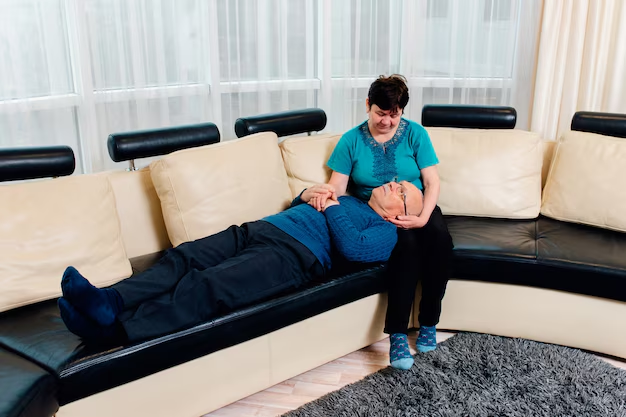Understanding Falls in Parkinson's Disease: Insights and Prevention
Parkinson’s disease is a progressive neurological condition that affects movement and coordination, often leading to challenges with balance and stability. A common concern among patients and caregivers is the risk of falling, which can lead to injuries and further complications. But what factors contribute to a fall in a Parkinson's patient, and how can one mitigate these risks?
The Nature of Falling in Parkinson's Disease
Balance and Gait Disturbances
One of the hallmarks of Parkinson's is bradykinesia, or slowness of movement, which significantly impacts a person's gait. Patients often exhibit a shuffling walk with short steps, diminished arm swing, and an overall hesitancy in movement. This alteration in gait increases the potential for falls.
Postural Instability
Parkinson's also affects the body's ability to maintain balance, known as postural instability. This can lead to occasional tipping over when standing or walking, particularly when turning or changing directions. Due to these factors, a person with Parkinson's might start a fall in one direction, and owing to instability, end up falling backward or sideways.
Freezing of Gait
A less understood but critical aspect is the freezing of gait, where a person temporarily feels stuck to the ground, especially when starting to walk, turning, or encountering obstacles. This can occur at doorways or in crowded spaces and might cause abrupt falls, often forward.
Unexpected Triggers
Certain environmental or emotional triggers can initiate these falls. Stress, anxiety, and even multitasking can exacerbate movement difficulties, leading to missteps and, subsequently, falls.
Strategies for Reducing Fall Risk
Although falls cannot always be prevented, certain strategies can reduce their likelihood and severity.
Physical Activity and Exercise
Engaging in regular exercise is one of the most effective ways to enhance balance and mobility. Activities like tai chi, yoga, and dance focus on improving strength, flexibility, and coordination, thus aiding in fall prevention.
Assistive Devices
Canes, walkers, or wheelchairs can provide valuable support. However, the selection and use of these devices should be tailored to the individual's needs. Professional guidance from a physical therapist can ensure safe and effective use.
Environmental Modifications
Modifying the home and other frequently accessed environments can significantly decrease the risk of falling. Some suggestions include:
- Removing tripping hazards: Ensuring floors are clutter-free and rugs are securely fastened.
- Adequate lighting: Bright lighting lessens the risk of missed steps, particularly at night.
- Bathroom safety aids: Installing grab bars near the toilet and in the shower can provide necessary support.
Medication Management
Certain medications used to control Parkinson's symptoms may influence balance as a side effect. Regular consultation with a healthcare provider can help in adjusting dosages or changing medications to minimize this risk.
The Role of Caregivers
Caregivers play an essential role in fall prevention. Their awareness and proactive involvement can make a substantial difference.
Communication and Vigilance
Open communication between the patient and caregiver about fears or recent fall incidents can be beneficial. Caregivers should also watch for non-verbal cues indicating discomfort or imbalance.
Assisting Safely
Knowing how to assist safely without putting themselves at risk is crucial for caregivers. Techniques and training offered by health professionals can equip them with the skills necessary for effective support.
Emotional Support
Beyond physical assistance, providing emotional support is vital. Many patients experience frustration or embarrassment due to falls. Reassurance and encouragement can alleviate anxiety and build confidence in their ability to move safely.
Broader Implications of Falls
Falls in Parkinson’s patients are more than just physical injuries; they can have psychological and social implications too.
Fear of Falling
The experience of a fall can instill a fear of falling, leading to excessive caution, reduced physical activity, and social isolation. This fear can create a cycle where decreased activity further weakens muscles, increasing fall risk.
Maintaining Independence
It's essential to balance safety with independence. Encouraging participation in community activities and maintaining social interactions can enhance life quality and reduce fall-related anxiety.
Research and Innovations
Ongoing research for better treatments and preventive measures is an evolving field. Innovations such as wearable technology and balance-training tools are being explored to aid Parkinson's patients in staying active and fall-free.
In Summary:
- Balance and Stability: Parkinson's affects balance and gait, increasing fall risk.
- Exercise and Support: Regular physical activity and appropriate assistive devices are key.
- Environmental Adjustments: Modifying living spaces aids in creating a safer environment.
- Caregiver Role: Communication, vigilance, and emotional support are vital.
- Addressing Fear: Managing the psychological impact of falls is important for maintaining independence and quality of life.
Key Takeaways ✅
- 🏃♂️ Keep Moving: Engage in regular exercise like tai chi or yoga to improve balance.
- 🚶♀️ Use Assistive Devices: Utilize canes or walkers with professional advice.
- 🏠 Modify Home Environment: Secure rugs, enhance lighting, and install grab bars.
- 💊 Review Medications: Consult healthcare providers for optimal medication management.
- ❤️ Caregiver Support: Ensure caregivers are trained to provide physical and emotional support.
Taking these steps can help manage the risk of falling in Parkinson's patients, boosting their confidence and safety in daily activities.

Related Articles
- Are There Environmental Causes Of Parkinsons
- Can Alcohol Cause Parkinson's
- Can Concussions Cause Parkinson's
- Can Females Get Parkinson Disease
- Can Head Trauma Cause Parkinson's
- Can Parkinson Disease Cause Dizziness
- Can Parkinson's Affect Eyesight
- Can Parkinson's Affect Memory
- Can Parkinson's Affect Speech
- Can Parkinson's Affect Vision